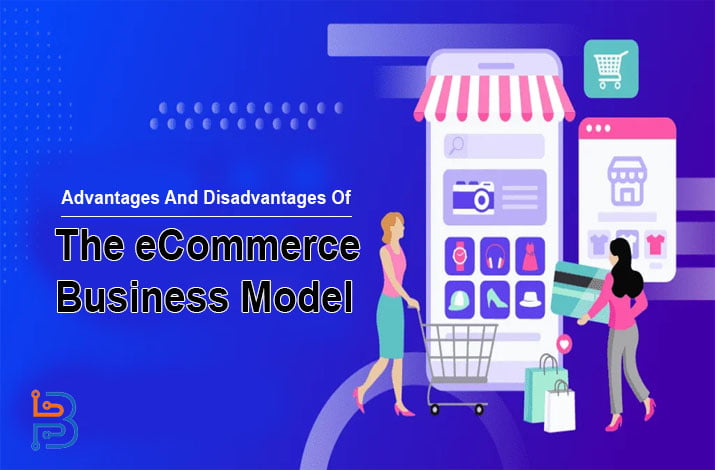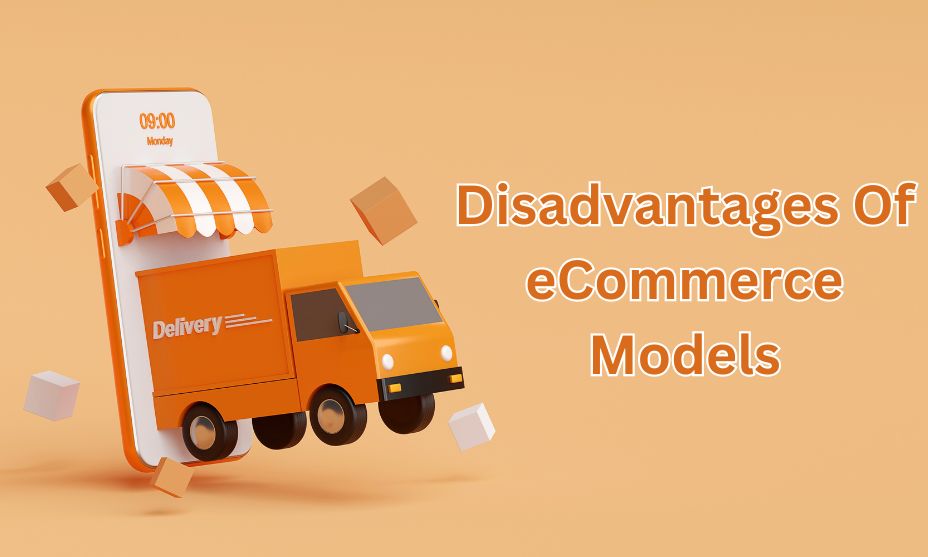The Advantages And Disadvantages Of The eCommerce Business Model

E-commerce has changed how businesses operate and customers shop by bringing them all together in one digital space. In a time when businesses are focusing on globalization and over 5.3 billion internet users worldwide, the eCommerce business model has established itself as the go-to option. This model can offer more convenience, cost-effectiveness, and a better shopping experience than the traditional brick-and-mortar model.
Despite these advantages, there are disadvantages. With many already established online businesses, going this route may not be ideal for your business. This article will examine the advantages and disadvantages to help you decide if it’s the right fit.
Advantages Of the eCommerce Model
eCommerce business model has several advantages, including:
1. Reduced Overhead Costs
The cost of establishing a brick-and-mortar business is usually high as you need to pay for inventory, licenses, and rent. In the eCommerce model, it’s different. You don’t need a physical store, hence no need for rent or licenses. Additionally, some models like print-on-demand (POD) may not require inventory, as you only stock what’s ordered. All you need is to follow experts like Rachel Rofe as they have programs that teach you how to start viable and cost-effective online businesses.
Moreover, you can also start your eCommerce business with already established brands such as Amazon by joining the Amazon FBA. You can also get programs such as Rainmaker Challenge that teaches you to be a third-party seller on Amazon, hence cutting down the overhead costs needed to set up an eCommerce or brick-and-mortar business.
2. Expanded Customer Base
Another benefit of an eCommerce business model is the expanded customer base and global reach that comes with it. Many people shop online, and as long as they’re connected to the internet, they can order products and services regardless of their location. Customers don’t have to visit your physical store to buy. They’ll complete the checkout process, and you can ship the products to them.
Additionally, eCommerce models provide an excellent marketing channel that can help you reach more people. You can use search engine optimization (SEO) to rank your online store higher on search engines and get organic traffic. Secondly, you can use paid advertising to rank for certain keywords on platforms such as Google Ads and subsequently get more traffic.
3. Enhanced Customer Convenience
Customer experience and convenience influence modern businesses. Customers will go for businesses that offer convenience and meet their demands. Setting up an eCommerce business can help solve many problems that customers face and improve their satisfaction. First, online stores allow users to buy products from different vendors without leaving the comfort of their homes, and the products can be shipped to them.
Secondly, customers have the flexibility to choose from a wide range of sellers. A simple internet search on a particular product will display a results page listing several online stores. They can then click any of the results and compare the prices, see product and shop reviews, and shipping costs, among other details that may influence their purchase decision.
4. Data Driven Insights
Data is the new form of gold and drives many operations in the world. It’s no different in the eCommerce space, where data is used to get more information about business performance, customer satisfaction, and conversion, among other details. This is different in a brick-and-mortar store where customers walk in, make purchases or not, and walk out making it hard to keep track of important metrics.
But in an online store, you can easily know how many people visited your website in a specific period, how many made purchases, those who didn’t make any purchases, and at what stage of the sales funnel they dropped off. Moreover, you can use pop-up forms on your website to get customer feedback about your business such as their experience or why they’re abandoning a cart.
The data gives better insights into customer behavior and business performance. You can also use it to improve your online store. For example, if customers are abandoning the cart, you can streamline the checkout process by embedding the payment system.
Disadvantages Of eCommerce Models

Despite the many advantages that online stores offer, there are limitations that come with this model, both for businesses and customers. Here are a few of them:
1. Limited Interactions
One of the biggest disadvantages of eCommerce stores is that it takes away the physical interaction and feel that customers get in physical stores. Some stores use AI technology such as chatbots which means customers don’t interact with human customer care. This can take away the human interaction that customers can experience when shopping in a store.
Secondly, customers don’t get to feel the products they’re purchasing. Usually, the products contain detailed descriptions such as color, size, material, and texture. However, these descriptions cannot match the feeling customers get by physically touching the product and visualizing how it fits them. So, they may choose to buy from a local store instead of an online shop, which means reduced revenue.
2. Increased Cybersecurity Threats
E-commerce retailers and customers are a prime target for cybercriminals, with about 83% of retailers in the USA being vulnerable to cybersecurity attacks. Hackers can still have sensitive customer information, such as credit cards and home addresses, among others. They can also target businesses to cut down services, plant ransomware, and save finances.
This is unlike physical stores, as the shop’s system doesn’t collect or store customer information. While this doesn’t make them immune to cyberattacks, it helps to reduce the number of entry and target points for attackers. Additionally, as most of the business data doesn’t exist online, the amount of damage caused during an attack is usually low.
3. Challenges In Building Brand Trust
Customers need to trust a business before they can buy from them or give them any information. For physical stores, it’s easy for customers to trust them as the store is there, and customers pay and walk out with their products. However, for online stores, the business exists online in another region, and shipment is mostly done after payment is done.
This makes it very hard for customers to trust businesses. If the business is new, customers will be skeptical about providing personal information or completing payments. It will take more marketing efforts before customers can freely buy from your business.
Final Thoughts
The eCommerce business model has been a game-changer. It provides businesses with the opportunity to target more customers, get data-driven insights, and reduce overhead costs. It also offers more convenience to customers, as they get options and flexibility when shopping.
However, there are several downsides to this mode, such as cyber threats and a lack of physical interactions. Therefore, you must assess both sides of the model before choosing the best for your new business.






